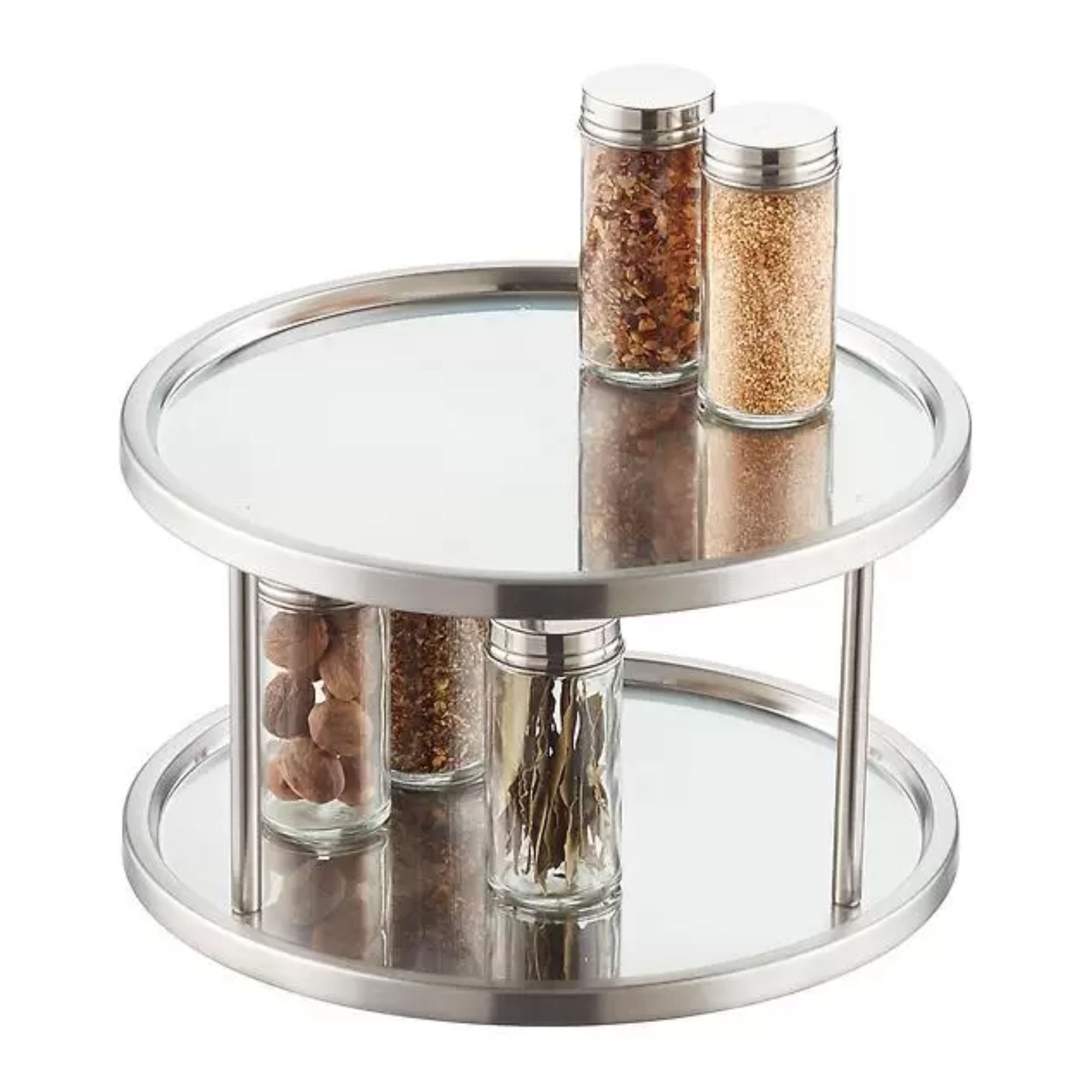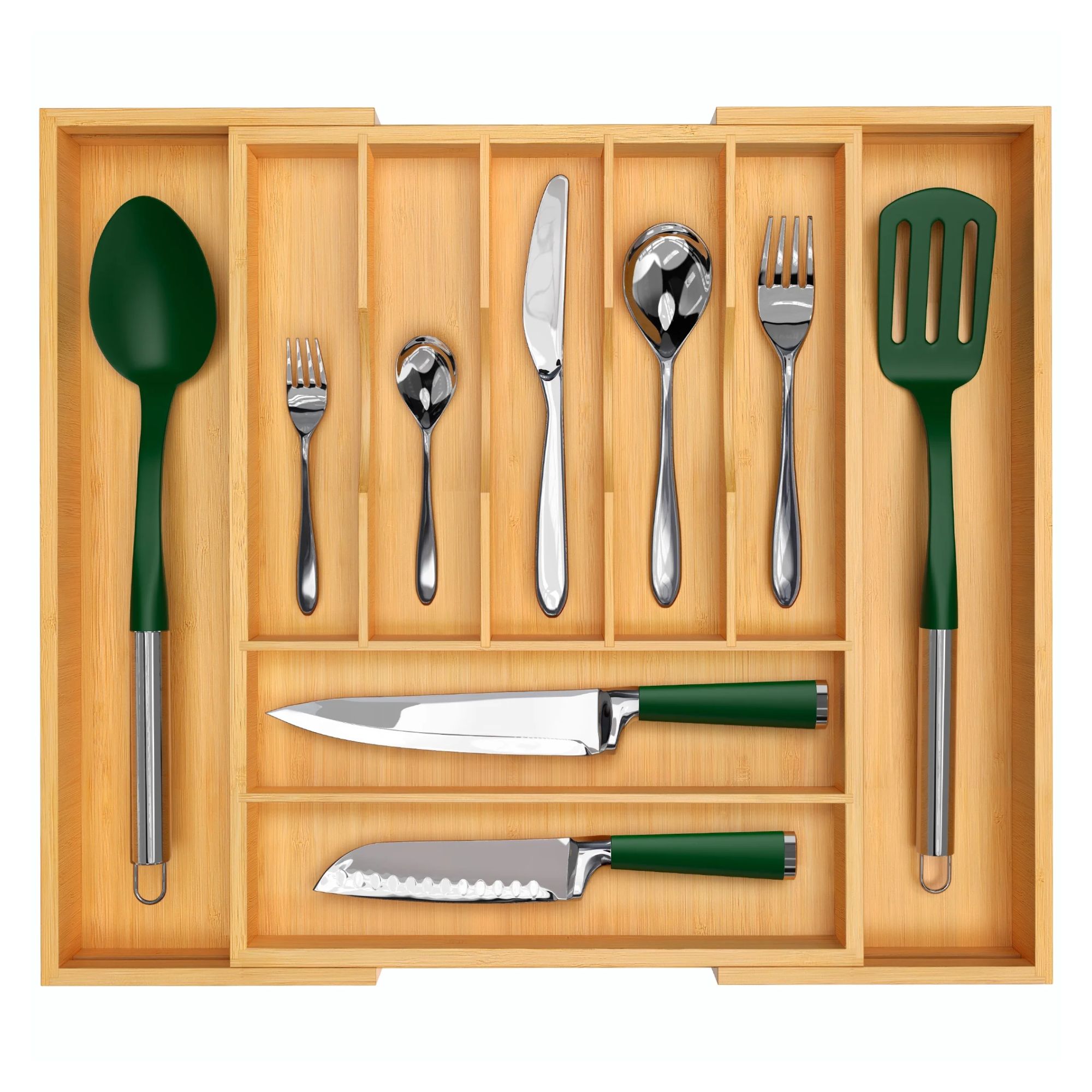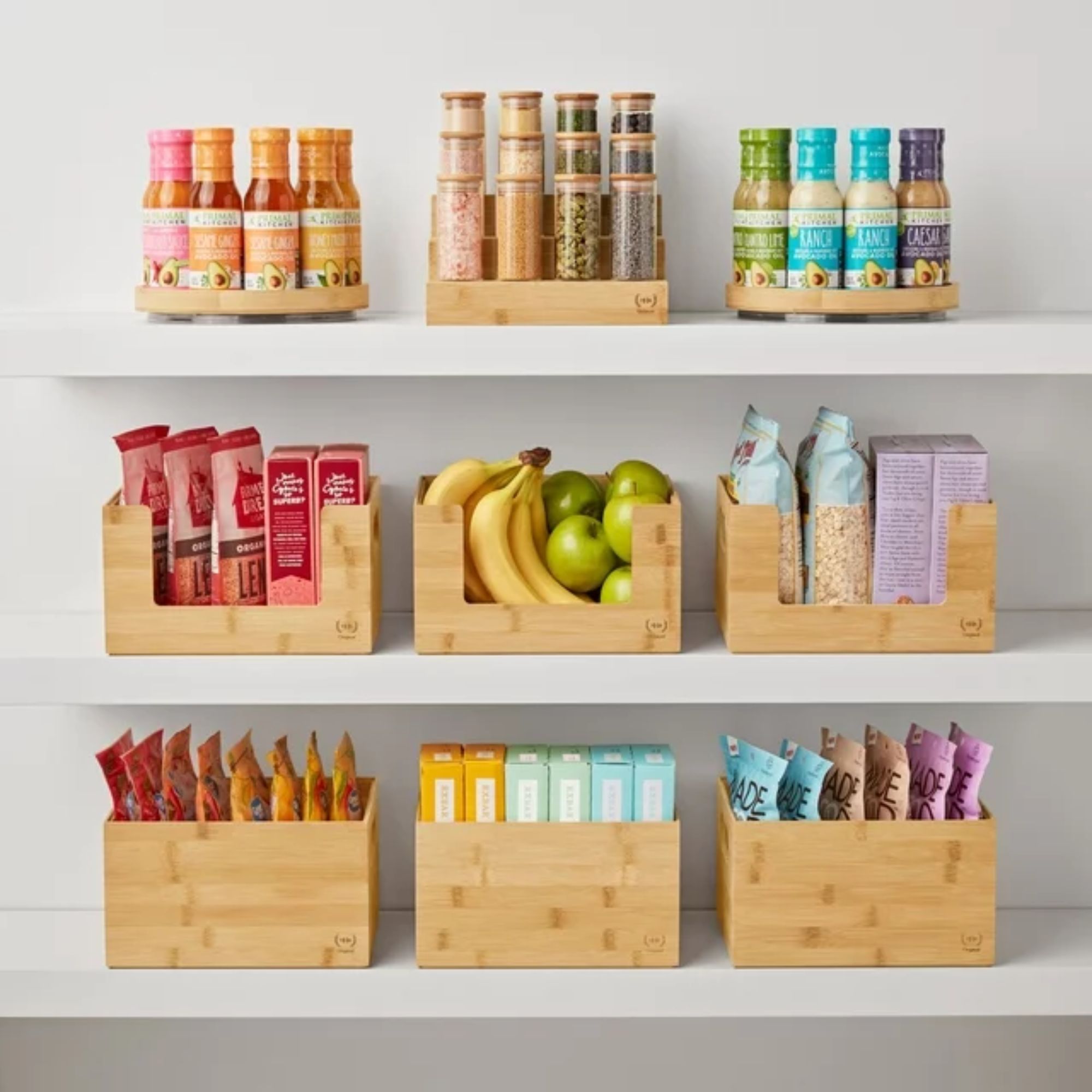6 ways to reduce visual clutter in your kitchen, according to the experts
When items are in their designated places but your space still looks untidy, that's called 'visual clutter' – thankfully this is easy to fix with strategic storage and organization techniques
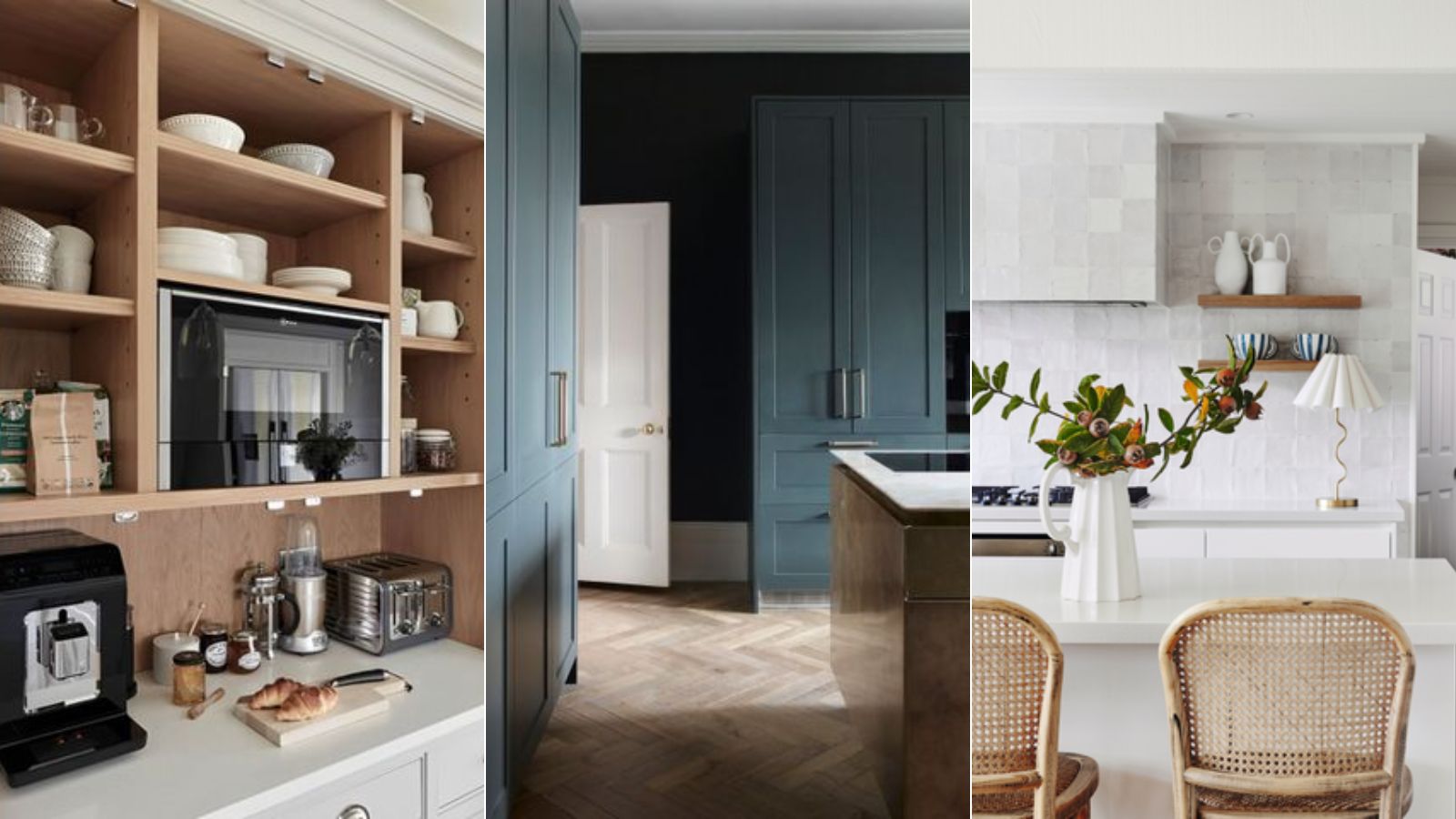

As a bustling hub of activity, kitchens can easily become overwhelmed with visual clutter. This build-up can make it look chaotic and potentially highlight a flawed organizational system. Yet, by implementing a few simple strategies, you can restore visual harmony within your kitchen, ensuring it is both functional and clutter-free.
Visual clutter can be overwhelming – not only can it make your kitchen less efficient and cleaning more challenging, but it can also create a more psychologically stressful environment. For this reason, keeping visual clutter at bay is key to creating a more enjoyable space.
In this guide, our experts have explained their top techniques to organize your kitchen to conceal ugly household items, along with innovative storage ideas and effective routines for visual decluttering.
Ways to reduce visual clutter in the kitchen
Before you begin to arrange your kitchen to reduce visual clutter, it's essential to first assess and categorize your items based on their frequency of use.
Start by determining whether each item in your kitchen belongs in this room or if it can be stored elsewhere. By removing non-essential items from your kitchen, you can free up space to organize the items that you do use.
Next, for the items that you do need in the kitchen, sort them into categories based on how often they are used and where they will be used. This will determine how you assign storage for them.
These initial steps will help you better assess your storage needs and consider the most efficient kitchen layout to prevent visual clutter from building up again.
1. Use open shelving sparingly

While open shelving can add to a sense of spaciousness, it can also contribute to visual clutter if not curated carefully.
'Some open shelving is great and can be a very effective way to open up the space and break up too much cabinetry. However, too much open storage can create visual clutter which will immediately exhaust your eye and make the space feel visually busy,' explains Caroline Winkler, @thegoodsitter.
So, if your kitchen is designed with mostly open shelving, create a balance by adding some closed storage as well. This will reduce the pressure of needing perfectly arranged shelves to keep your kitchen looking good since convenient and efficient storage is most important in a kitchen.
Additionally, be purposeful about what you store on open shelves, displaying limited items to avoid them looking overcrowded. Only store items that you want convenient access to, such as those you use daily, or that add aesthetic value to your kitchen.
The Japanese organizing technique, 'Ma' emphasizes the use of intentional space by integrating negative space between objects. By applying this to your shelving, you can reduce visual clutter, instead creating a more harmonious display that is far from visually cluttered.
2. Keep decor simple
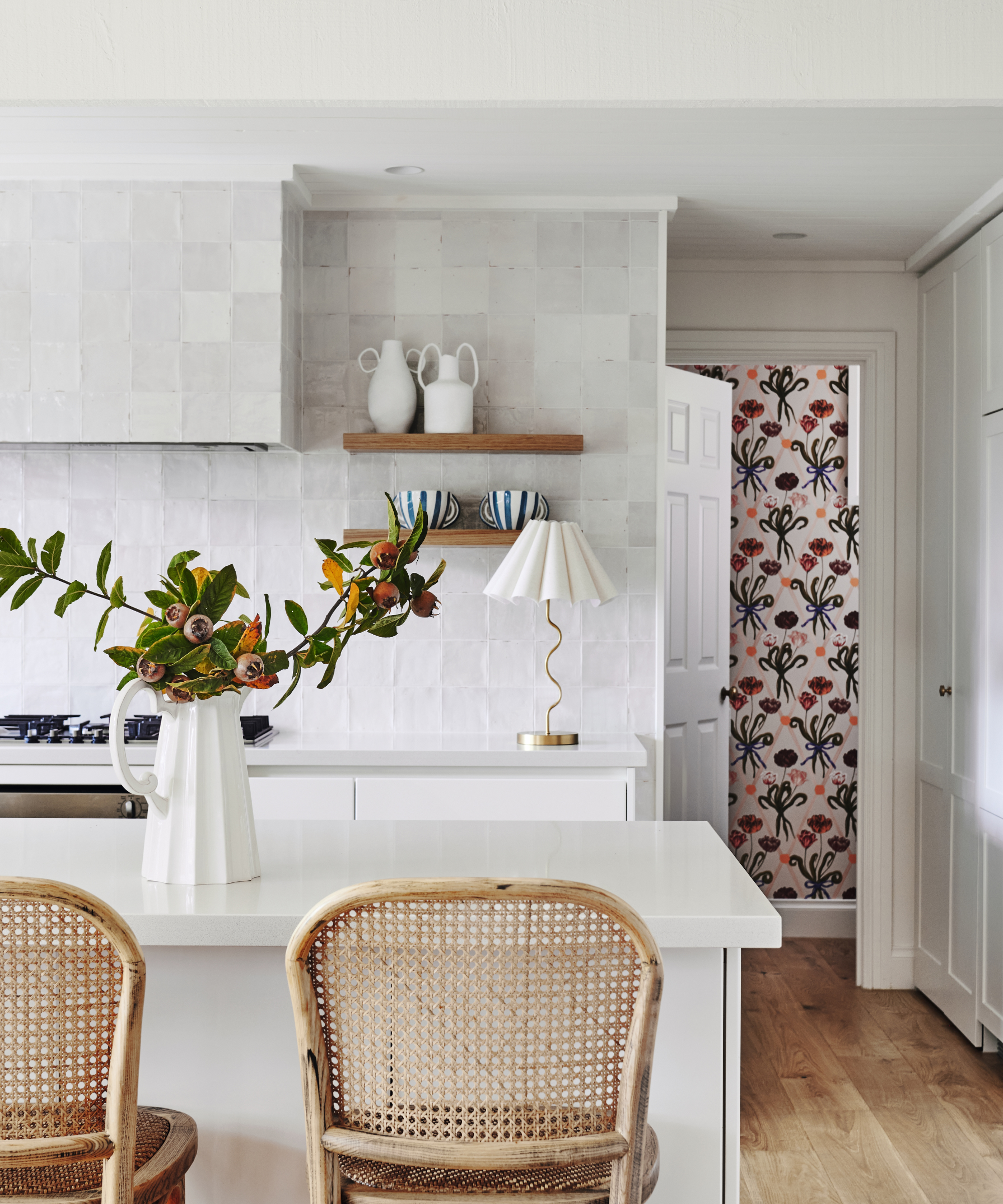
While not essential to banish visual clutter, embracing minimalism can streamline your kitchen's aesthetic, effectively reducing the appearance of overcrowding and simplifying tidying routines.
Opt for clean lines and simple shapes by choosing minimalist cabinetry, countertops, and hardware. Choose a few statement pieces that complement your kitchen's color scheme and style. These should make a statement without overwhelming the space.
If you prefer a maximalist decorative decor style, consider balancing this by painting your kitchen in light, neutral tones conducive to a bright and airy feel. Choosing light-colored cabinets, walls, and countertops creates a sense of spaciousness and reduces the appearance of clutter.
3. Carefully choose and store appliances
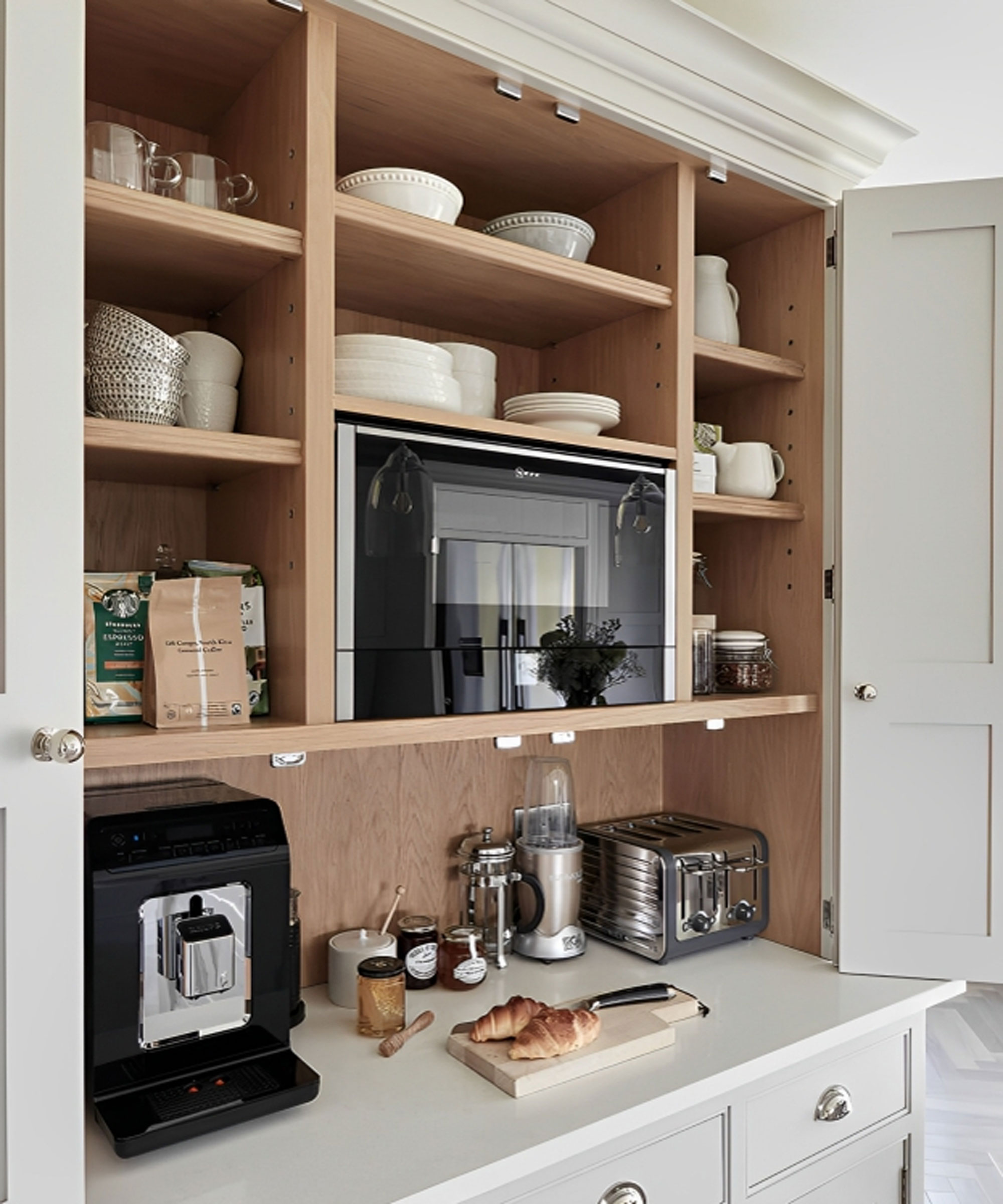
Kitchen appliances can often be an eyesore in a kitchen – while these essential items may be most convenient when stored on your countertops, this can easily make your space appear cluttered.
Being tactful about the items you choose and finding creative ways to store and organize kitchen appliances can ensure these don't undermine the aesthetics of this space. Here's how:
- 'Opt for kitchen appliances that serve multiple purposes to reduce the number of items cluttering your countertops,' recommends cleaning expert at Spekless Cleaning, Karina Toner. 'For example, a blender that doubles as a food processor can help save space.
- Dianna Scarpa, Head Designer at Opal Home Staging also recommends: 'Integrate appliances seamlessly into your kitchen design to maintain a cohesive and streamlined look.'
- Concealing appliances behind cabinet panels minimizes visual clutter, allowing other design elements to take center stage. Built-in refrigerators, dishwashers, and ovens blend effortlessly with cabinetry, creating a cohesive 'visual flow'.
- 'Keep countertops clear by storing appliances that are not used daily in cabinets or closets to create a more open and spacious feel. An appliance garage is a great way to easily hide appliances, like concealing an air fryer in a kitchen.
- Consider incorporating an appliance slider, such as this Beauvallon sliding try from Amazon for frequently used items. This will allow you to bring these forward for easy usage and is a great way to keep these appliances on hand yet out of sight.

Dianna Scarpa is one of New Jersey's foremost leaders in home staging and interior decorating. Her company, Opal Home Staging, is the only staging company on the Jersey Shore that specializes in affordable home staging. Dianna is known for her warm, friendly customer service and attention to detail. With her expertise, she helps more people sell their homes quickly and for more money.
4. Use organizational systems to maximize closed storage
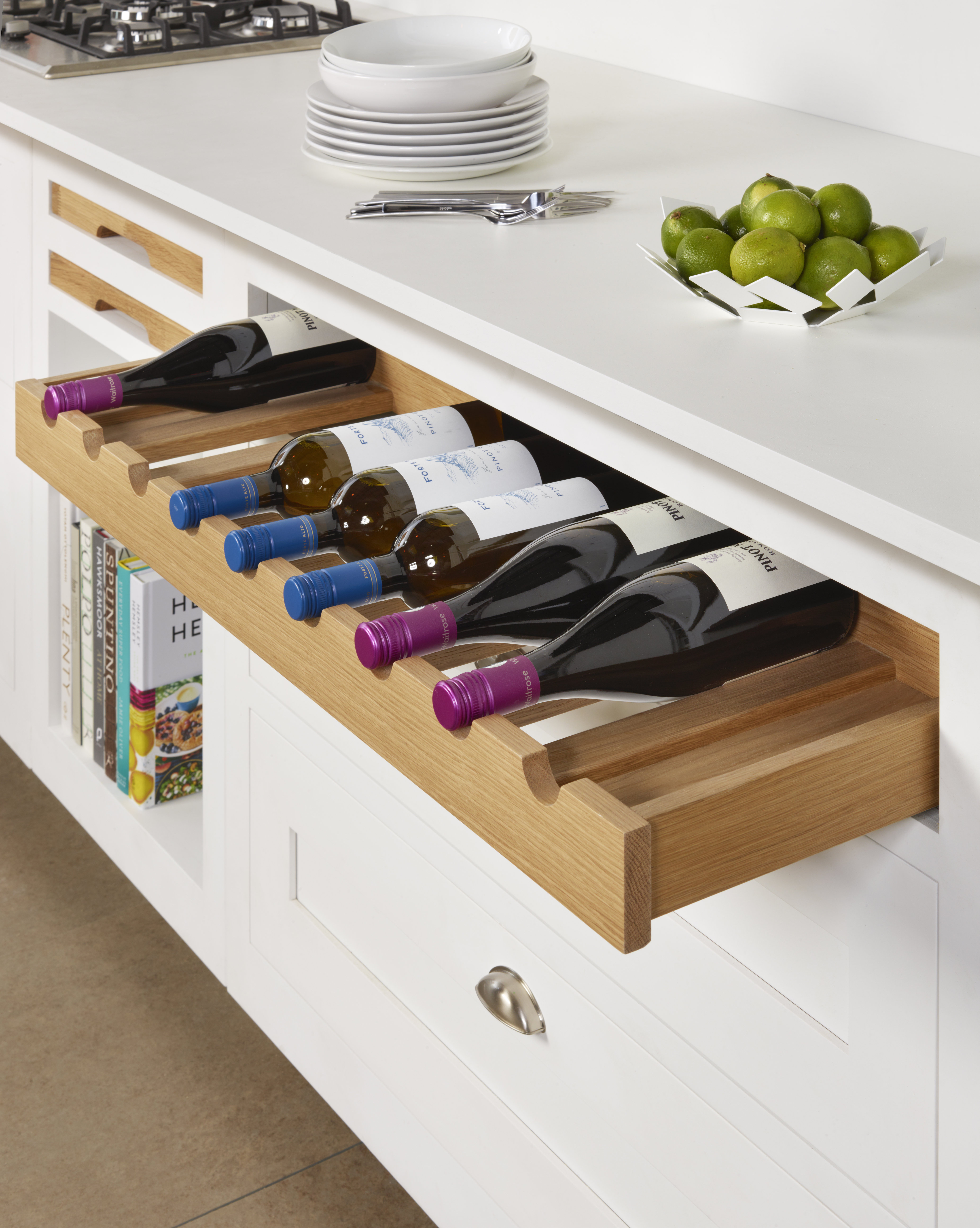
When items are visible and within easy reach, it reduces the tendency to create clutter. Pull-out shelves or lazy susans can be installed in cabinets to maximize storage space and make items stored at the back more accessible.
'You can use storage baskets, drawer dividers, over-door organizers, stackable shelves, or even magnetic spice racks to keep everything in its designated place and prevent the countertops from becoming a dumping ground for random items,' says Ana Coddington, Lead Interior Designer for Archival Designs.
'While these tools may require some initial investment, they can make a huge difference in reducing visual clutter and improving your kitchen layout.'
5. Choose uniform kitchen items
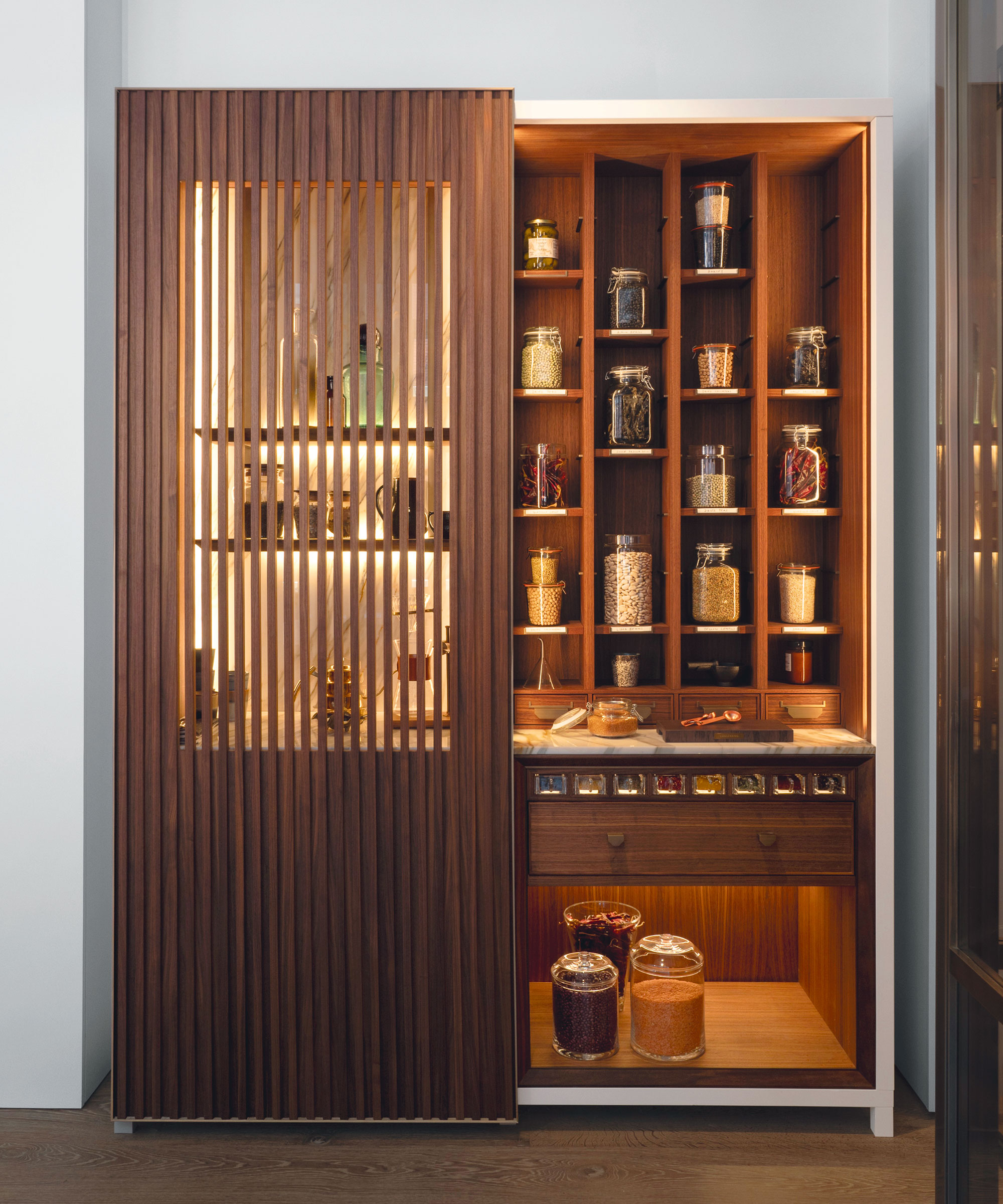
'When using open shelves, keep the color palette simple and cohesive,' recommends Ashish Agarwal, founder of Home In Depth. 'Switch to uniform storage containers for pantry items. This simple change can dramatically reduce visual clutter, creating a cohesive and organized appearance. Clear containers also offer the practical benefit of easily identifying contents at a glance.'
Additionally, consider unifying your dishware. Opt for matching plates, bowls, and mugs. This will create a more streamlined and put-together appearance, allowing you more freedom to store items openly without it creating a cluttered effect.
6. Declutter and organize routinely
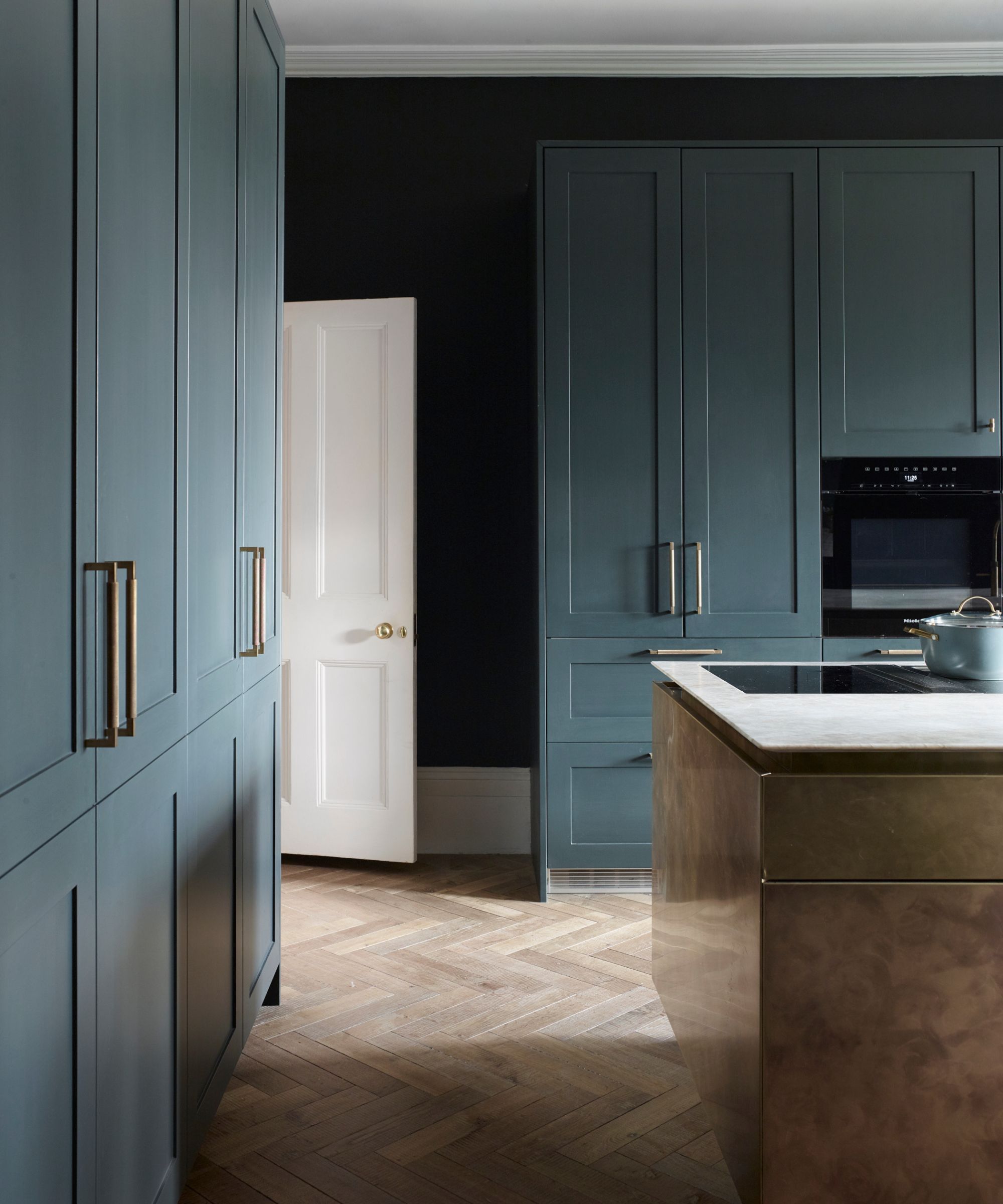
'Declutter as frequently as needed,' recommends Ana Coddington, interior designer. 'If you're not careful, it's easy for your kitchen to become a dumping ground for various items. It's the quick and easy drop zone for mail, keys, school papers, and other random items – many of which don't even belong in the kitchen. All these items can quickly pile up and add to the visual clutter in your kitchen.
'To prevent this, you can assign a day in the week to go through your kitchen and declutter any unnecessary items that have accumulated. This will help keep your kitchen looking clean and organized.
Here are some more helpful tips for organizing your kitchen:
- 'Follow the one in, one out rule: For every new item you bring into your kitchen, make it a habit to get rid of an old or unused item,' advises Ana Coddington. 'This can help prevent your kitchen from becoming overcrowded with unnecessary items and keep the visual clutter to a minimum. It's also a good way to regularly assess the usefulness of items in your kitchen and let go of anything that is no longer needed.
- Only allow what belongs in the kitchen to stay there: (i.e., small appliances and kitchen gadgets, dishware, cooking supplies). Everything else must have another designated area in the home,' advises Macie Kreutzer, a professional organizer with For the Love of Simple.
- Only keep what your family uses daily on the countertop: This may be something like the coffeemaker, toaster oven, or bread basket. Anything else should be housed in a closed pantry or drawer.
You may also find it helpful to take part in a nightly 'kitchen reset' where you put everything back in its proper space at the end of the day, wipe the kitchen counters down, and get your kitchen ready for use the next day.
Sign up to the Homes & Gardens newsletter
Design expertise in your inbox – from inspiring decorating ideas and beautiful celebrity homes to practical gardening advice and shopping round-ups.

Lola Houlton is a news writer for Homes & Gardens. She has been writing content for Future PLC for the past six years, in particular Homes & Gardens, Real Homes and GardeningEtc. She writes on a broad range of subjects, including practical household advice, recipe articles, and product reviews, working closely with experts in their fields to cover everything from heating to home organization through to house plants. Lola is a graduate, who completed her degree in Psychology at the University of Sussex. She has also spent some time working at the BBC.
-
 Kelly Ripa and Mark Consuelos's dining room shelves combine unexpected elements for the ultimate storage solution – it's multi-functional and replicable
Kelly Ripa and Mark Consuelos's dining room shelves combine unexpected elements for the ultimate storage solution – it's multi-functional and replicableGreen shelves in Kelly Ripa and Mark Consuelos' dining room cleverly combine storage to accomplish separate purposes in a pretty way
By Sophie Edwards Published
-
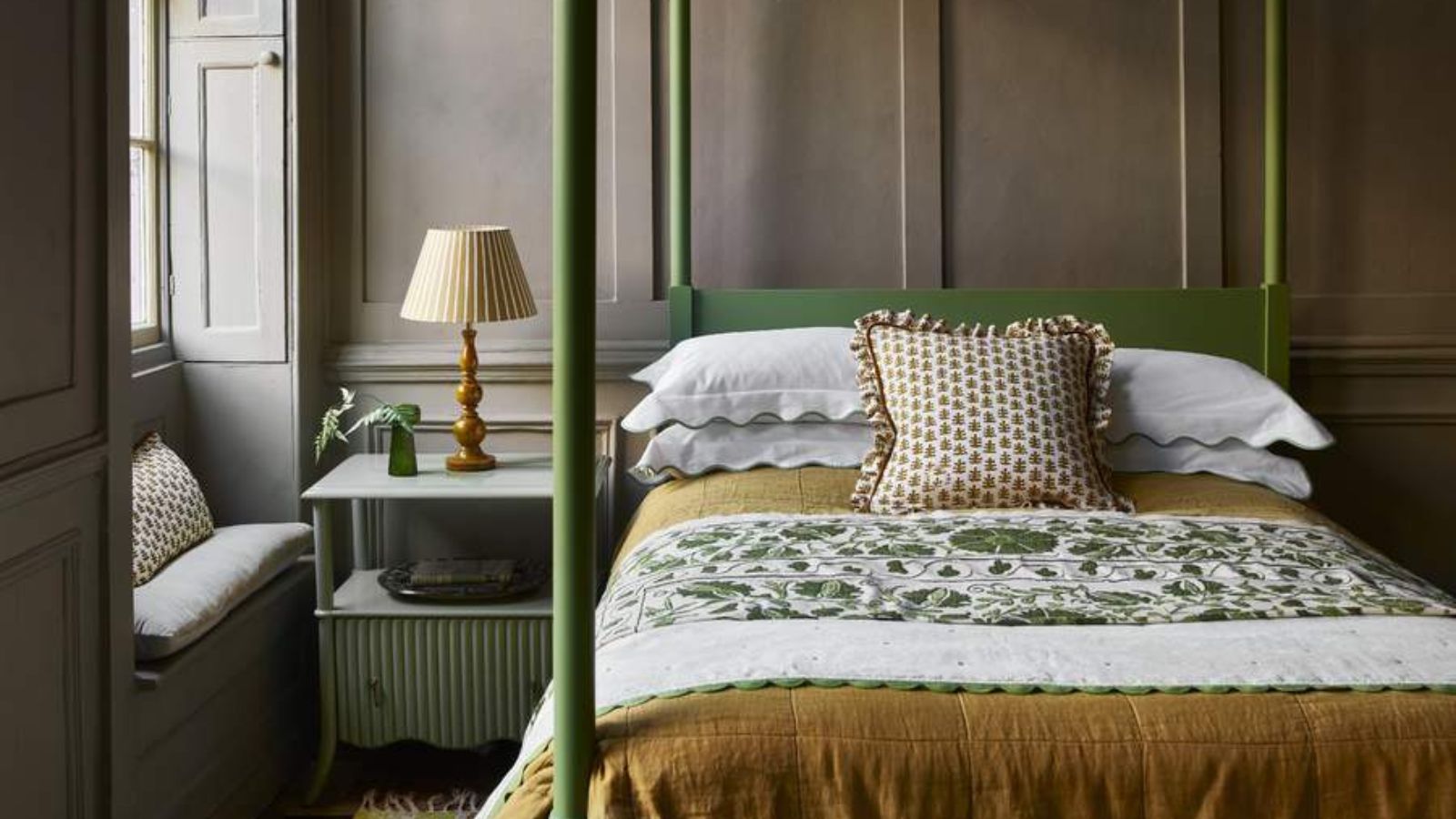 I'm a Sleep Editor – these are the 7 mattress features I think are gimmicks and not worth the spend
I'm a Sleep Editor – these are the 7 mattress features I think are gimmicks and not worth the spendIn my search to find the world's best mattress, I've come across some duds − learn from my mistakes and avoid these mattress gimmicks
By Emilia Hitching Published
